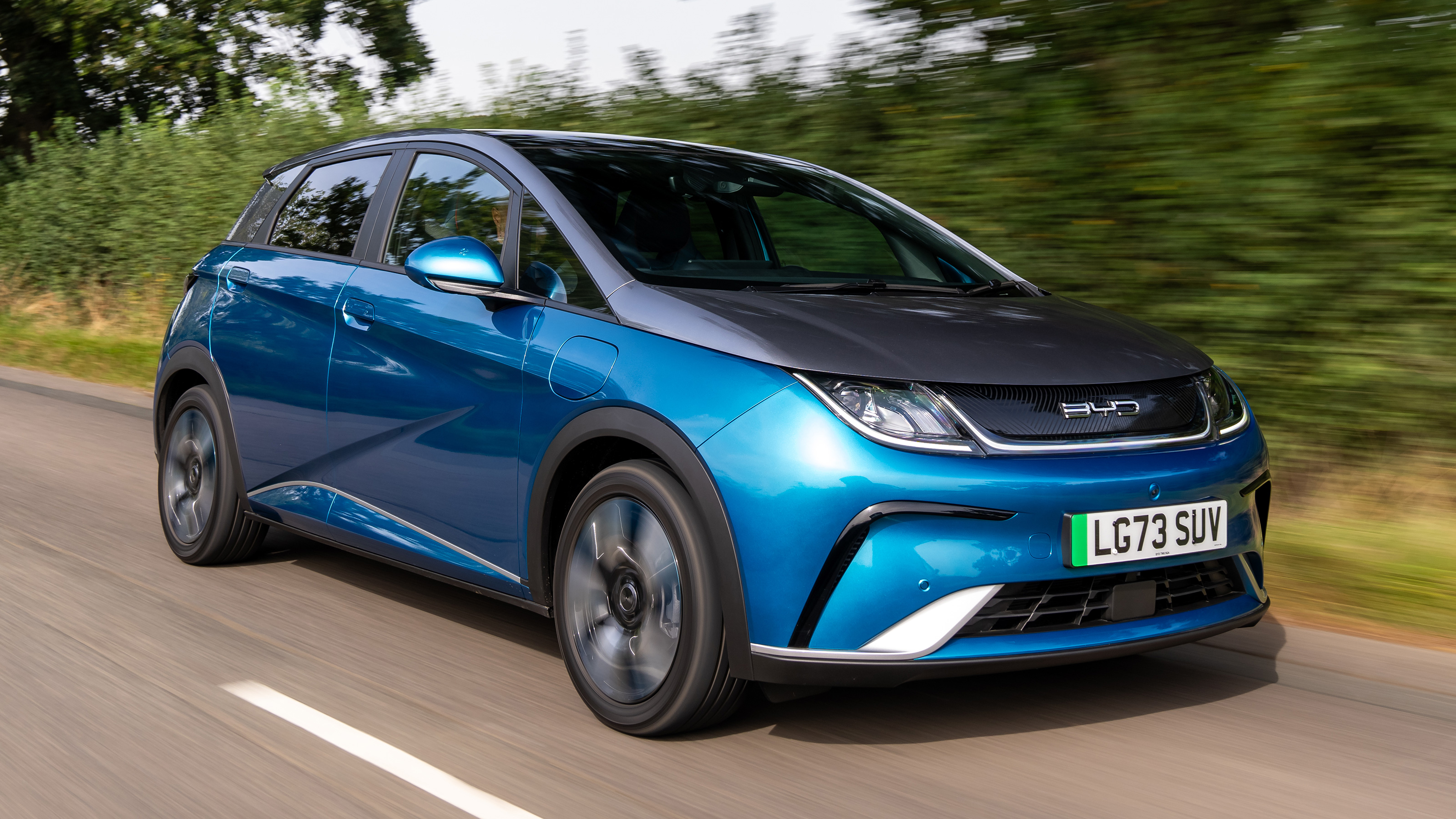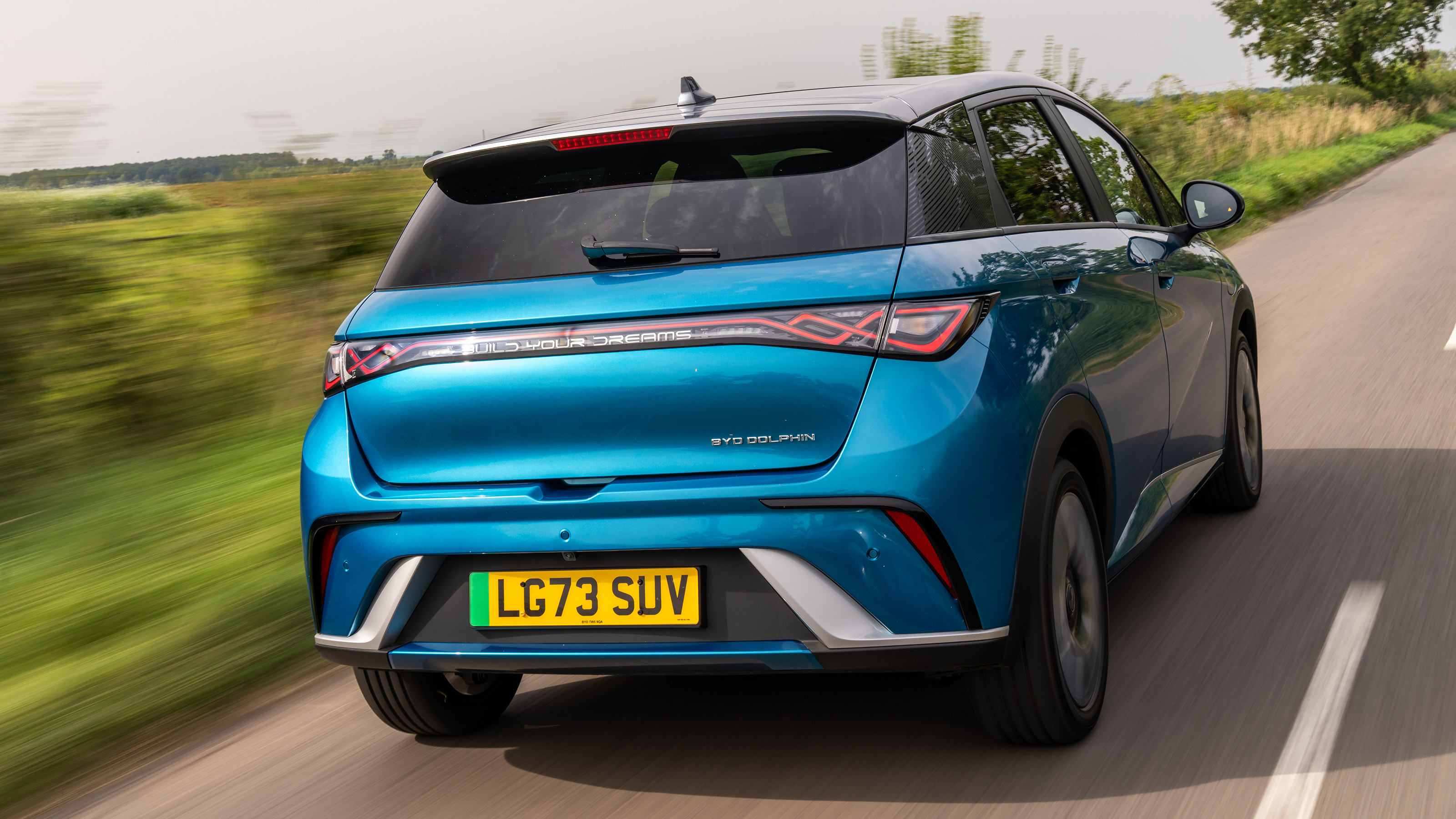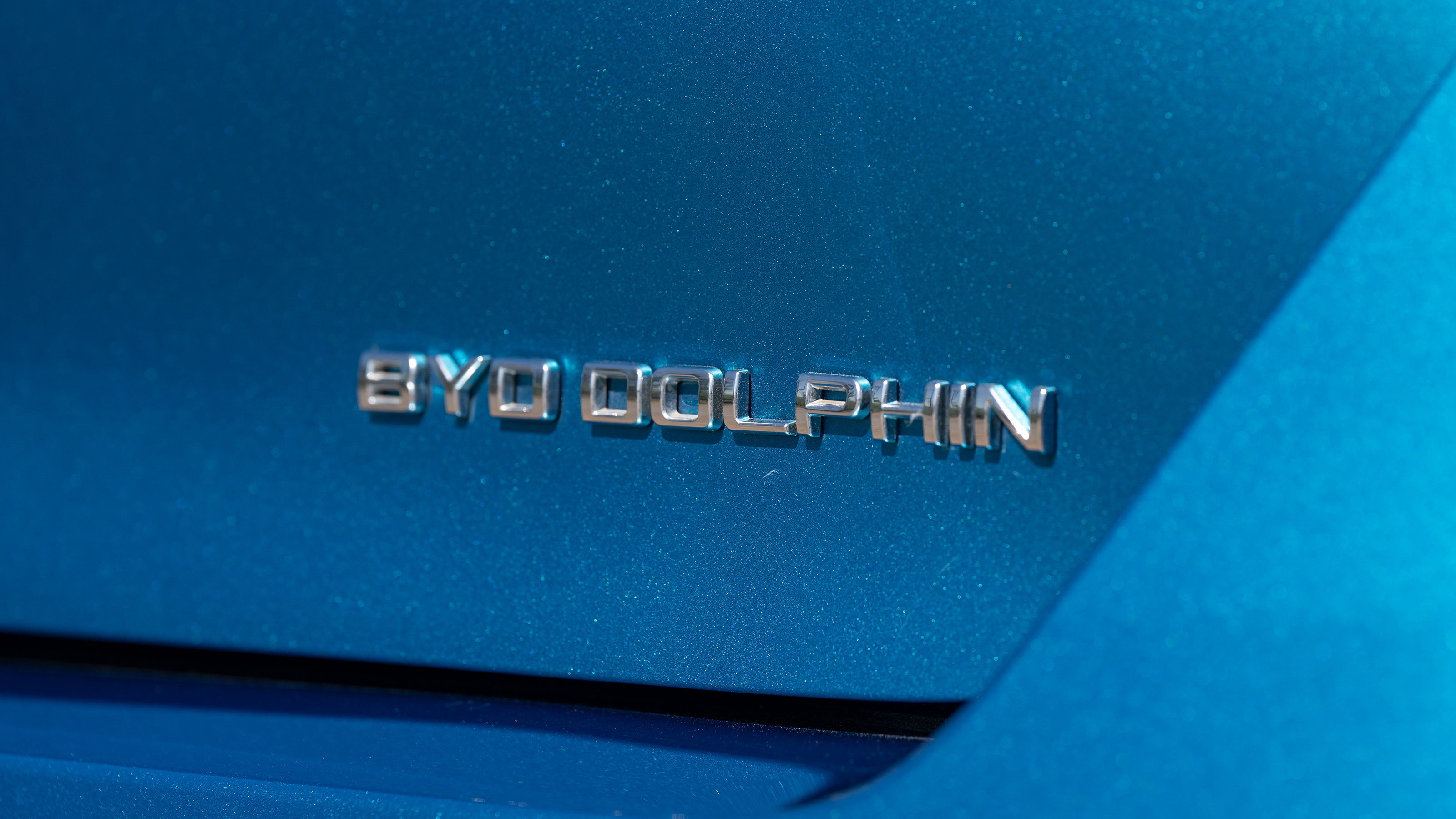
The first thing I thought when I looked at that, was ‘dolphin’.
Admit it, it’s just quite nice to have a car with an actual name rather than a slew of numbers or something made-up. Even if it is a bit daft. And not quite as silly-sounding as the forthcoming BYD Seal. Or the BYD Atto 3, which isn't even the third of anything.
But the Dolphin is the first to adopt what BYD is calling the ‘Ocean Aesthetics’ design concept. And yes, the little C-segment electric hatch you’re staring at really is supposed to be inspired both figuratively and imaginatively by a dolphin. Insert whichever pithy seafaring joke you want here.
So if it’s not a dolphin, what is it?
The reality is a compact hatch with a decently spacious interior, generous kit and proper range… that looks nothing like a dolphin. In the UK we get the larger 60.4kWh battery first which provides 265 miles of WLTP range, and eventually a 44.9kWh version will give either 211 or 193 miles depending on spec.
Four grades: Active (93bhp), Boost (174bhp), Comfort and Design, the first two with the smaller battery and two power outputs, the latter pair both with the same motor and 201bhp.
As for headline pricing, the base Active car starts at £26,195, with the range-topping Design hitting the dizzying heights of £31,695.
Let’s talk about two-tone.
It's livened up by a selection of two-tone paintjobs in seven perky colour-combos. There are those among us who will no doubt love the interesting pink.
Otherwise the Dolphin's outside design is actually pretty conservative. There are shades of Honda Jazz-esque surfacing in parts, and it's quite narrow and tall. That side profile is supposed to resemble a leaping dolphin, by the way, but it doesn’t. It’s also supposed to look ‘safe and welcoming’ while exuding a sense of ‘fun and agility’. Really it's all very clean-but-bland…
… until you get to the inside.
Ah yes, as with the bigger-brother Atto 3 SUV, the Dolphin seems to compress all the creativity into the cabin. And largely successfully. It’s a playful interior with some very interesting shapes and colours.
Even the doorhandles are swoopily-shaped like a dolphin’s flipper, which is kitschy in a weird way. The gear selector is a vertical wheel on the centre console – feels a bit cheap, that – but the other hardware seems nice enough.
All seats are 'vegan leather' (aka plastic) but are perforated, so not too sweaty. And the bucket-backed front seats are really very comfy.
Top Gear
Newsletter
Thank you for subscribing to our newsletter. Look out for your regular round-up of news, reviews and offers in your inbox.
Get all the latest news, reviews and exclusives, direct to your inbox.
Space is quite impressive, given the footprint of the car. Head, leg, elbow room, as well as plenty of volume for backseat passengers. The boot isn’t massive at 345 litres.
If you want the big panoramic roof though you have to head for the top-spec Design, and it’s worth doing: it really brightens up the interior, unsurprisingly.
For little discernible reason beyond impressing the kids, the big touchscreen rotates under motor power. The graphics for this screen are neat enough, but menu accessibility is a hostile mess. You need loads of jabs to do simple and urgent things, especially switching all the driver-assist. Also, phone mirroring captures the entire screen, so it's a couple more jabs to get back to the BYD controls if you're on phone maps or music.
The driver's screen is small, has a messy set of icons, and tiny speedo digits. Still, BYD's HQ is quick to respond to requests. It promptly deleted the 'Build Your Dreams' chromed signwriting on the Atto 3's hatch after we all laughed. These screen-based bloopers can presumably be fixed by OTA software updates.
It’s got decent range and a clever battery though!
BYD is a Big Company back in China, with reams of battery expertise. The Dolphin’s ‘Blade’ battery has LFP (lithium iron phosphate) cathode chemistry. It's more durable in deep cycles than the more common LMC (lithium manganese cobalt), and yes it's cobalt-free. Less energy-dense than LMC, but it compensates for that by the improved density of its cell-to-pack 'blade' structure.
There’s a neat eight-in-one electric powertrain that packages the VCU, battery management, power distribution unit, drive motor and its controller, transmission, DC-to-DC converter and onboard charger into one unit.
A heat pump is standard, and also advanced battery conditioning that could see a 15 per cent increase in thermal efficiency in winter. Good stuff.
We saw the battery deplete by 33 per cent in 75 miles on a warm, wet day, extrapolating to 225 miles range of rattling around Midlands single carriageways as rapidly as traffic allowed.
As far as charging goes, it’s a bit average. With 88kW DC, they claim 29 minutes from 30-80 per cent, which sounds fine, but most competitors manage half an hour-ish from 10-80 per cent. A sleight-of-hand with the stats there. Still, the better pair of grades also get 11kW AC, so if you find a three-phase supply, it’ll charge up respectably. TG suspects that most owners will be the stay-at-home charge types though, so that’s not quite the issue that some people would have you believe.
Camp kitchen cooks, or those in a power cut, will be grateful for the 3.3kW external output.
What’s it like to drive, then?
On our first test, abroad, was with preliminary motor calibration that made it painfully slow. Driving in Britain, it actually felt like all 201 ponies were on duty. The right-pedal action is neatly proportional, and the power it summons gets you decent acceleration: 0-62mph in 7.0 seconds, they say, and it feels capable if you're not spinning a wheel. It's quite prone to activating traction control out of a roundabout.
Braking hands across neatly between regeneration and friction. So no worries with acquiring or losing speed. But using the power exposes the chassis flaws.
Things start out OK. The steering is accurate around the straightahead and not too quick, so it doesn't feel nervous in a straight line. But it fails to gain weight in a turn. Accelerate at the apex of a bend and torque steer makes it worse, with the self-centring action going missing. Add some ridges or raised white lines into the mix and you need to concentrate hard to wind the lock neatly off. You'll probably have the lane-departure warning system screaming at you by then.
The Dolphin seems to want to trade handling for ride, but the execution is poor. The dampers are supple, which helps comfort at low speed. But that lets it heave and float on an undulating surface, exaggerating your steering woes. Passengers might not care for it either, because it's a nauseous motion. But it'll at least deal with urban potholes and lumps without punishing you.
Did BYD engineers ever come to the UK? Or even Europe? By contrast the equally Chinese rear-wheel drive MG4 feels set up for UK roads and preferences; the Dolphin, like the GWM Ora 03, feels like a ‘world car’ that suits very few. But then, MG employed some British engineers.
The Dolphin, like its natural namesake, is always whistling, tooting and making some sort of noise. The driver assistance systems are incredibly intrusive, maddeningly hard to switch off and not entirely gone when you do. We kept finding ourselves interrogating the screens trying to divine the source of one of several electronic warning hoots. It felt more perilous than a lack of interruption. Then there's the motorway wind noise. Not awful, but just another thing for the 'could do with improvement' laundry list.
You love it, don’t you? You really love it.
Frankly, an uninterested driver sticking to moderate speeds – and the roads are manifestly full of those folk – probably wouldn't uncover the dynamic flaws.
They'd see it as a car that looks fine, has great hardware, a creative and fun interior and impressive space for the footprint.
The bigger-battery Dolphin is as well-specced as a Renault Megane E-Tech Electric or VW ID.4, for electric supermini money. The smaller battery compares with the cheapest version of the MG4, which starts at about the same price. The MG doesn't have vehicle-to-load electric output, or such comprehensive driver assist in all models. Nor is its interior so nicely finished. But it's far more interesting to drive.
Bluntly, the BYD Dolphin simply feels unfinished. Remapped steering assistance tune and better dampers would go a long way. So would revised screen software.
Not too much to ask? At the moment it seems like BYD is tantalising us. Hope it's not doing it on porpoise.
Featured

Trending this week
- Car Review
BMW iX3






